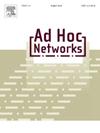Open source user mobility and activity datasets: Taxonomy and applications
IF 4.4
3区 计算机科学
Q1 COMPUTER SCIENCE, INFORMATION SYSTEMS
引用次数: 0
Abstract
The study of user mobility and activity (uMA) has numerous applications, including network resource planning, connected healthcare, localization, social media, and e-commerce. Current research in uMA heavily relies on open-source traces captured from pedestrian, vehicular, and application-based activities. These traces are rich in features and diverse, not only in the information they provide but also in their potential applications. However, this diversity presents two main challenges for researchers and practitioners who aim to utilize uMA datasets, classify existing datasets, or create new ones. Firstly, there is no readily available comprehensive classification of existing open-source uMA traces, making it typically labor-intensive and time-consuming to determine whether the identified datasets are suitable. Secondly, it is challenging to identify the key features and their specific use cases without conducting a detailed analysis of the traces.
This manuscript aims to address these challenges in three ways. First, we propose a taxonomy for classifying open-source mobility traces based on mobility mode, data source, collection technology, and application type. This taxonomy can be used to create tags for both existing and new datasets, making it easier to find problem-specific datasets compared to current search methods. Second, we demonstrate how existing datasets can be classified according to this taxonomy, providing examples of popular open-source uMA traces, along with information about their publishing source, licensing, and anonymization strategy. We also discuss how this taxonomy can guide the collection of new uMA datasets. Finally, we present three case studies using popular publicly available uMA datasets to illustrate how our taxonomy can be used to identify feature sets in the traces, helping to determine their applicability to specific use cases in networking, health, lifestyle, and location-based services.
开源用户移动性和活动数据集:分类法和应用程序
对用户移动性和活动(uMA)的研究有许多应用,包括网络资源规划、互联医疗、本地化、社交媒体和电子商务。当前的uMA研究严重依赖于从行人、车辆和基于应用程序的活动中捕获的开源痕迹。这些痕迹的特征丰富多样,不仅提供了信息,而且具有潜在的应用价值。然而,这种多样性对旨在利用uMA数据集、对现有数据集进行分类或创建新数据集的研究人员和从业者提出了两个主要挑战。首先,现有的开源uMA轨迹没有现成的全面分类,这使得确定识别的数据集是否合适通常是劳动密集型和耗时的。其次,在没有对跟踪进行详细分析的情况下,识别关键特性及其特定用例是具有挑战性的。本文旨在从三个方面解决这些挑战。首先,我们提出了一种基于移动模式、数据源、收集技术和应用类型的开源移动痕迹分类方法。该分类法可用于为现有数据集和新数据集创建标记,与当前的搜索方法相比,可以更容易地找到特定于问题的数据集。其次,我们演示了如何根据这种分类法对现有数据集进行分类,提供了流行的开源uMA跟踪示例,以及有关其发布来源、许可和匿名化策略的信息。我们还讨论了这种分类法如何指导新的uMA数据集的收集。最后,我们提供了三个使用流行的公开可用的uMA数据集的案例研究,以说明如何使用我们的分类法来识别轨迹中的功能集,帮助确定它们对网络、健康、生活方式和基于位置的服务中的特定用例的适用性。
本文章由计算机程序翻译,如有差异,请以英文原文为准。
求助全文
约1分钟内获得全文
求助全文
来源期刊

Ad Hoc Networks
工程技术-电信学
CiteScore
10.20
自引率
4.20%
发文量
131
审稿时长
4.8 months
期刊介绍:
The Ad Hoc Networks is an international and archival journal providing a publication vehicle for complete coverage of all topics of interest to those involved in ad hoc and sensor networking areas. The Ad Hoc Networks considers original, high quality and unpublished contributions addressing all aspects of ad hoc and sensor networks. Specific areas of interest include, but are not limited to:
Mobile and Wireless Ad Hoc Networks
Sensor Networks
Wireless Local and Personal Area Networks
Home Networks
Ad Hoc Networks of Autonomous Intelligent Systems
Novel Architectures for Ad Hoc and Sensor Networks
Self-organizing Network Architectures and Protocols
Transport Layer Protocols
Routing protocols (unicast, multicast, geocast, etc.)
Media Access Control Techniques
Error Control Schemes
Power-Aware, Low-Power and Energy-Efficient Designs
Synchronization and Scheduling Issues
Mobility Management
Mobility-Tolerant Communication Protocols
Location Tracking and Location-based Services
Resource and Information Management
Security and Fault-Tolerance Issues
Hardware and Software Platforms, Systems, and Testbeds
Experimental and Prototype Results
Quality-of-Service Issues
Cross-Layer Interactions
Scalability Issues
Performance Analysis and Simulation of Protocols.
 求助内容:
求助内容: 应助结果提醒方式:
应助结果提醒方式:


